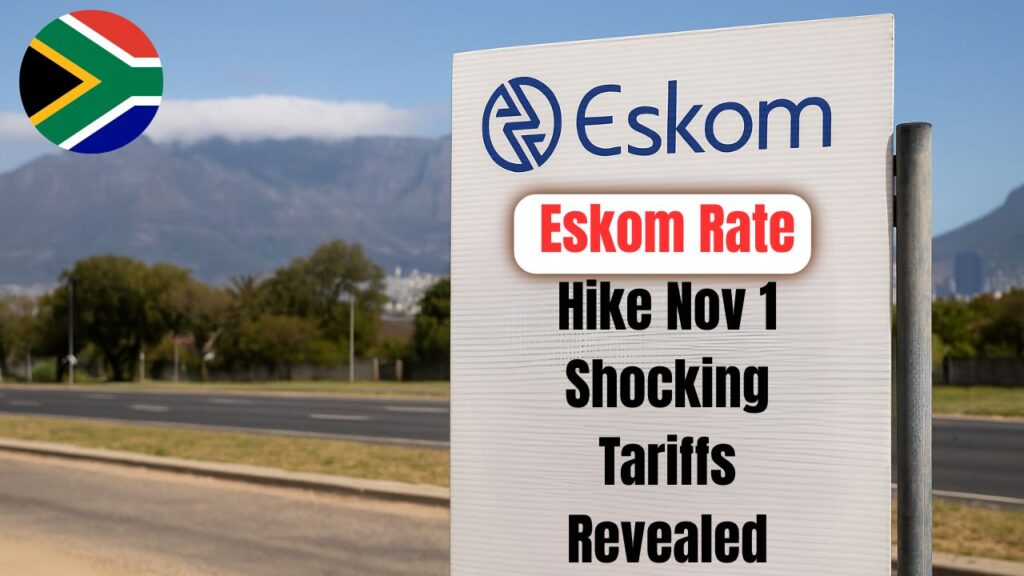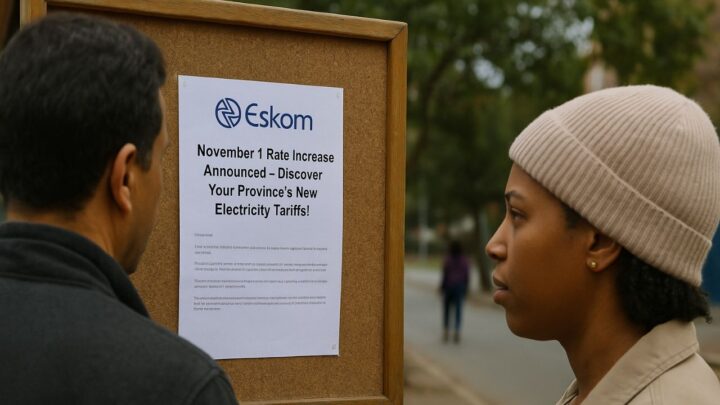Eskom has officially announced a nationwide electricity tariff increase effective from November 1, 2025, impacting all provinces across South Africa. This latest rate adjustment aims to cover rising infrastructure and maintenance costs, but it will also raise household and business expenses as the festive season approaches. Consumers are advised to review their provincial rate structures to understand the exact percentage of increase applied by their local municipality. The new tariffs reflect Eskom’s ongoing financial recovery plan and will vary based on consumption level and location.

Understanding Eskom’s November 2025 Electricity Tariff Hike
From November 1, Eskom’s new electricity tariff will bring an average 12.7% increase across different user categories. Residential consumers, small businesses, and large industries will all see distinct adjustments. The revised rate structure has been approved by the National Energy Regulator of South Africa (NERSA), ensuring compliance with national energy policies. However, the impact will be more noticeable in provinces like Gauteng, KwaZulu-Natal, and Western Cape, where urban demand remains high. Eskom urges customers to adopt energy-efficient practices to manage increased costs effectively.
Province-Wise Breakdown of Eskom’s New Rates
Each province in South Africa will experience a slightly different tariff adjustment due to local infrastructure and municipal costs. In Gauteng, rates are expected to rise by 13.2%, while Western Cape and KwaZulu-Natal will see around 12.5% and 11.9% increases, respectively. Rural provinces such as Limpopo and Eastern Cape will experience moderate hikes due to lower consumption density. Customers are encouraged to check Eskom’s official portal for region-specific rate charts. These variations aim to balance affordability with sustainability and service maintenance.
How South Africans Can Manage Higher Electricity Bills
With the November tariff hike approaching, South Africans can take several measures to minimize electricity expenses. Switching to prepaid meters, using solar power solutions, and optimizing appliance usage during off-peak hours can help. Households should also consider energy audits and LED lighting to reduce overall consumption. Eskom’s Free Basic Electricity (FBE) program continues to support low-income households, providing limited free units each month. By adopting these smart practices, consumers can better adapt to the new billing structure and reduce the financial impact of higher rates.

Eskom’s Energy Saving Tips for November 2025
Eskom recommends practical energy-saving strategies to counterbalance the new rate increase. Reducing geyser usage, switching off unused electronics, and insulating homes can significantly cut power costs. Businesses should invest in energy management systems and train staff to maintain efficient energy habits. Eskom also provides community programs that promote renewable adoption through subsidized solar panels. As the country moves toward cleaner energy solutions, every small effort helps in stabilizing South Africa’s long-term electricity supply and ensuring more predictable future tariffs.
| Province | Previous Rate (R/kWh) | New Rate (R/kWh) | Increase (%) | Effective Date |
|---|---|---|---|---|
| Gauteng | 2.43 | 2.75 | +13.2% | 1 Nov 2025 |
| Western Cape | 2.51 | 2.82 | +12.5% | 1 Nov 2025 |
| KwaZulu-Natal | 2.40 | 2.68 | +11.9% | 1 Nov 2025 |
| Eastern Cape | 2.30 | 2.54 | +10.4% | 1 Nov 2025 |
| Limpopo | 2.28 | 2.48 | +8.7% | 1 Nov 2025 |
 South Africa to Shift From 65: South Africa’s New Retirement Age & Rules Seniors Must Know in 2025
South Africa to Shift From 65: South Africa’s New Retirement Age & Rules Seniors Must Know in 2025
FAQs
Q1: When will the new Eskom electricity rates take effect?
A1: The new rates will apply from November 1, 2025, across South Africa.
Q2: Who approves Eskom’s tariff increases?
A2: All tariff adjustments are approved by the National Energy Regulator of South Africa (NERSA).
Q3: Will prepaid users also be affected by the increase?
A3: Yes, prepaid users will also experience adjusted rates based on provincial tariffs.
Q4: How can households reduce electricity bills after the hike?
A4: By using energy-efficient appliances, switching to solar, and reducing power wastage.




